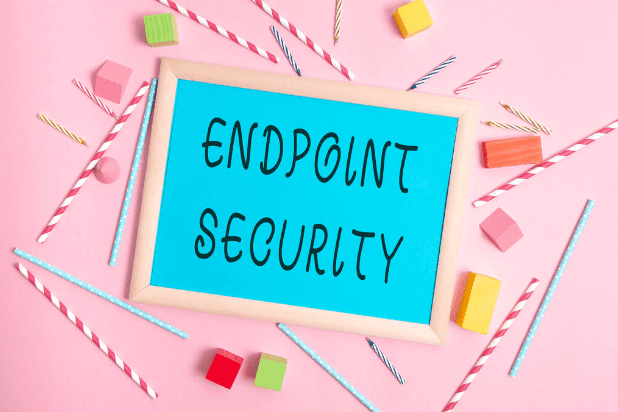Definition of Endpoint Security
Endpoint security is a method used to protect an organization’s network from malicious activity by controlling access and monitoring activity at the endpoints of the network. Endpoints include devices such as computers, laptops, tablets, mobile phones, and any other device connected to the network. Endpoint security involves securing each endpoint with its own set of authentication methods such as passwords or biometrics. It also includes protocols for detecting malicious activity and protecting devices from it.
Endpoint security is important because it helps ensure that only authorized users have access to sensitive information on a company’s networks and protects against threats like malware, ransomware, viruses, phishing attacks, data leakage, and more. It also ensures that no unauthorized user can gain access to the system or its resources without authorization.
Using endpoint security measures such as encryption technology on all machines connected to the network and implementing policies that restrict what type of data can be shared over networks or stored on machines without permission will help keep out unwanted intruders while allowing legitimate users access to sensitive information they need to do their jobs properly.
Types of Endpoint Security Solutions
The increasing threat of cyber-attacks has necessitated the use of endpoint security solutions to protect organizational networks. Endpoint security solutions are designed to detect, prevent, and respond to threats on endpoint devices. These solutions provide an additional layer of protection for networks by monitoring user activity and detecting any malicious software or unauthorized access attempts.
There are several types of endpoint security solutions available on the market today. These include antivirus/malware detection, application control, data loss prevention (DLP), patch management, network access control (NAC) systems, intrusion detection/prevention systems (IDS/IPS), mobile device management (MDM) systems, and cloud-based security services. Each solution has its advantages and disadvantages depending on the needs of an organization’s network infrastructure.
- Antivirus/Malware Detection: This is one of the most commonly used types of endpoint security solutions as it provides real-time protection against viruses, worms, Trojans, and other malicious programs that can cause serious damage to a computer system or network infrastructure. Antivirus software uses signature-based technology to detect known viruses as well as heuristics to detect unknown threats using behavioral analysis techniques.
Benefits of Endpoint Security Solutions
In today’s digital age, protecting your business’s data is paramount. With cyberattacks on the rise and the threat of data breaches ever-present, businesses must take measures to protect their sensitive information. Endpoint security solutions are a great way to do just that.
Endpoint security solutions are designed to protect devices and networks from malicious attacks by identifying potential threats and blocking them before they can cause any damage. These solutions can be installed on computers, mobile devices, servers, networks, printers, and other endpoints to keep them secure from external threats like malware or hackers. The benefits of using an endpoint security solution include:
1) Improved Network Security: By using an endpoint security solution you can detect any suspicious activity within your network quickly and block it before it causes any harm. This helps protect important files and sensitive data from being stolen or accessed without authorization. It also allows for better visibility into your network traffic so you can identify potential threats before they become a problem.
2) Increased Protection Against Malware: Cybercriminals often use malware as a way of infiltrating networks and stealing confidential information or wreaking havoc on systems by corrupting files or deleting important documents.
Challenges with Implementing and Managing Endpoint Security Solutions
In today’s digital world, endpoint security solutions have become increasingly important for businesses of all sizes. Endpoint security solutions are designed to protect an organization’s endpoints – such as computers, laptops, mobile devices, and more – from malicious attacks and other threats. However, implementing and managing these solutions can be a challenge due to the complexity of the technology involved and the different factors that need to be taken into account.
One of the biggest challenges with implementing endpoint security is ensuring that it is properly configured for each device on your network. It’s essential to make sure that each device is properly secured against potential threats; otherwise, attackers could exploit vulnerabilities in any unsecured system or device. Additionally, many endpoint security systems require regular updates to remain effective against new threats; this means organizations must stay on top of their patching schedules to keep their systems secure.
Another challenge with implementing these types of security solutions is ensuring they are compatible with other software and hardware on a network. Many organizations have multiple types of devices running different operating systems or applications which can cause compatibility issues if not managed correctly.
Conclusion
Endpoint security is an essential component of any business’s cybersecurity strategy. By implementing effective endpoint security measures, organizations can ensure that their networks, systems, and data are protected from malicious threats. Endpoint security solutions can help to detect and mitigate the risks posed by cybercriminals, while also providing an added layer of protection to corporate networks and data. Through a combination of proactive monitoring, threat detection, and response capabilities, endpoint security solutions can provide businesses with the reliable protection they need to keep their systems secure.


































